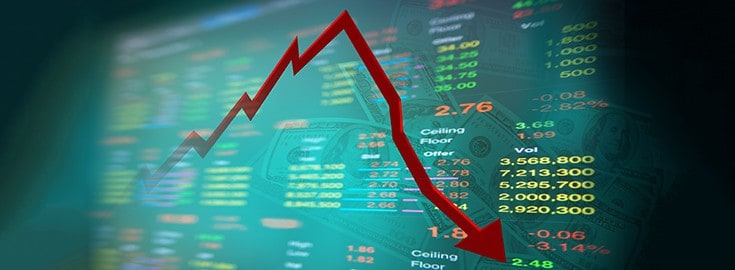
The first thing to know about the stock market’s eye-watering slide Monday is that it wasn’t caused by anything fundamental.
There was no particular piece of news that drove the major averages to capsize, in a move that sent the Dow industrials off more than 1,500 points — a new intraday record — briefly in the final hour of trading.
Instead, the market took on a mind of its own, where sentiment and likely some computer-programmed trading sent Wall Street into a bizarre tizzy. Fear brewed over a number of issues, with the biggest being trepidation about rising interest rates even though government bond yields actually were lower on the day.

“Panic is already starting to set in, which is kind of incredible when you actually think about it,” said Michael Yoshikami, CEO of Destination Wealth Management. “The S&P is trading where it was in sometime in December. So it’s not like we’re retracing an entire 12 months of returns here. I think investors are just understandably nervous. It probably is programmed trading kicking in at this point.”
Others blamed the Fed for the market breakdown, or least the mentality that led to the selling climate.
The central bank, following its meeting last week, noted that inflation looked to be on the uptick. That put the market on notice, a point that was echoed when the government Friday said average hourly earnings rose 2.9 percent in January, the fastest move of the recovery.
Investors’ minds quickly turned to a more aggressive central bank and the prospect of a faster pace of interest rate hikes.
“I’m not worried about this move. This is all a Fed move,” said Joe LaVorgna, chief economist for the Americas as Natixis. “If you don’t think there’s inflation and you don’t think the Fed’s going to be as aggressive as the hawks would have you think, this equity sell-off should be bought.”

Still, investors could be forgiven for having flashbacks about some of the market’s most vicious drops. The Dow fell throughout the morning, but the dive that happened around 2:40 p.m. ET actually resembled the violent 2010 flash crash. However, no trading desks contacted by CNBC reported trading issues in Monday’s big sell-off.
Sure enough, markets recovered somewhat just as they did that on that May 6 event nearly eight years ago.
But the damage could be substantial to the collective investor psyche.
“This is scary. A lot of people made a ton of dough over the last nine years,” said Stephen Weiss, founder and managing partner at Short Hills Capital Partners. “I think we’ve got some more to go. There’s not a catalyst to step in.”
The frightening contraction happened to a market that looked bulletproof.
The Dow had soared more than 40 percent since President Donald Trump’s election, a period that included an impressive nearly 20 percent rise in the S&P 500 for 2017 and the fastest start ever to a year in 2018.
“The market simply did not take into account that you can’t go up like this that long,” Yoshikami said.
“The key thing that I think people keep in mind here is that the market moves a lot very quickly, it doesn’t mean fundamentals are changing that quickly,” added Richard Bernstein, CEO of Richard Bernstein Advisors. “What you are seeing is the recalibration among investors that we actually are in a late-cycle environment.”
